Quilting is a cherished craft that weaves together creativity, precision, and a love for textiles. As quilters embark on their artistic journey, they invest time, effort, and passion into crafting beautiful quilts, making every stitch count.
Yet, a looming concern in this creative process is the potential for sewing thread to bleed onto the meticulously pieced fabric, threatening the vibrancy of the final masterpiece. In this exploration, we delve into the intriguing question: Will sewing thread bleed on a quilt?
To understand and address this phenomenon, we will unravel the intricacies of thread quality, fabric choices, pre-washing techniques, testing for colorfastness, and quilting methods to guide quilters in creating quilts that stand the test of time.
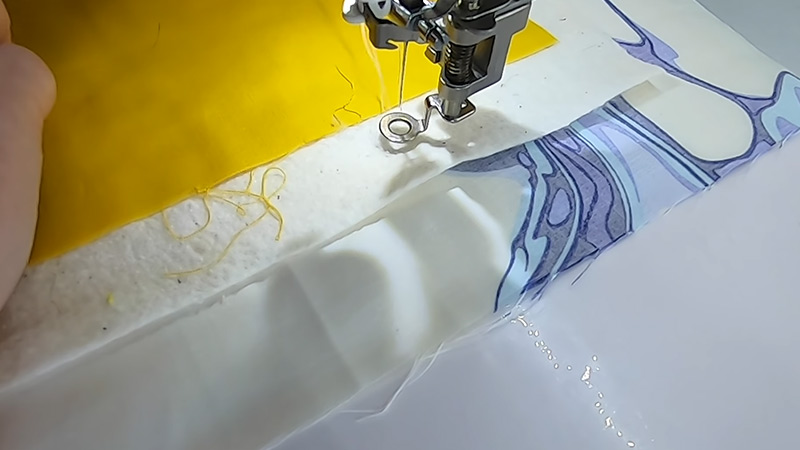
Will Sewing Thread Bleed On A Quilt?
Sewing thread can bleed on a quilt under certain circumstances. Thread quality, fabric type, and pre-washing are key factors. High-quality threads from reputable brands are less likely to bleed.
Fabrics with loose weaves and deep colors are more susceptible, but pre-washing can help. Testing a thread’s colorfastness by sewing a sample and soaking it in hot water is essential.
Adjusting quilting techniques, like using a smaller needle, can reduce friction and minimize the risk. Proper washing and care post-quilting, with cold water and a gentle detergent, can help prevent or address any bleeding issues.
By considering these factors and taking precautions, you can enjoy a vibrant, bleed-free quilt.
Why Does Sewing Thread Bleed on Quilts?
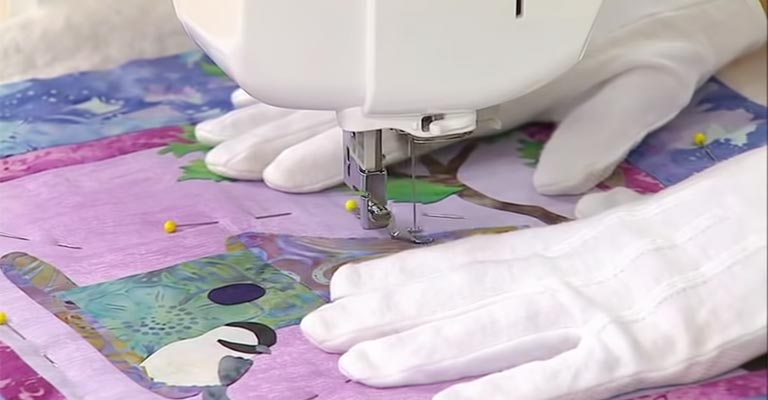
Sewing thread can bleed on quilts due to several factors, including the quality of the thread, the type of fabric used, and the quilting process itself. Understanding why this happens is essential for preventing and addressing the issue effectively.
Here are some key reasons why sewing thread may bleed on quilts:
Thread Quality
Lower-quality threads or threads that are not designed to be colorfast are more likely to bleed. Colorfast threads are specially manufactured to retain their color and resist bleeding even after exposure to moisture or washing.
Fabric Type
The type of fabric used in the quilt can significantly impact the risk of thread bleeding. Fabrics with loose weaves or deeply saturated colors are more prone to allowing dye transfer from the thread to the fabric.
Pre-Washing
Fabrics often contain excess dye or chemicals from the manufacturing process. Pre-washing both the fabric and the thread can help remove these excess materials, reducing the likelihood of bleeding during future washes.
Lack of Colorfastness
Some threads are not colorfast, meaning their dyes are not securely fixed to the thread. When exposed to moisture or heat, the dyes may bleed onto the surrounding fabric, causing discoloration.
Friction During Quilting
The friction created during the quilting process, particularly when using a larger needle, heavier thread, or high machine tension, can cause the thread to release its dye onto the quilt fabric.
Washing and Care
Using the wrong washing methods or detergents when cleaning the quilt can exacerbate bleeding. Using hot water, harsh detergents, or improper agitation can encourage dye transfer.
How Can You Prevent Thread Bleeding on Your Quilt?
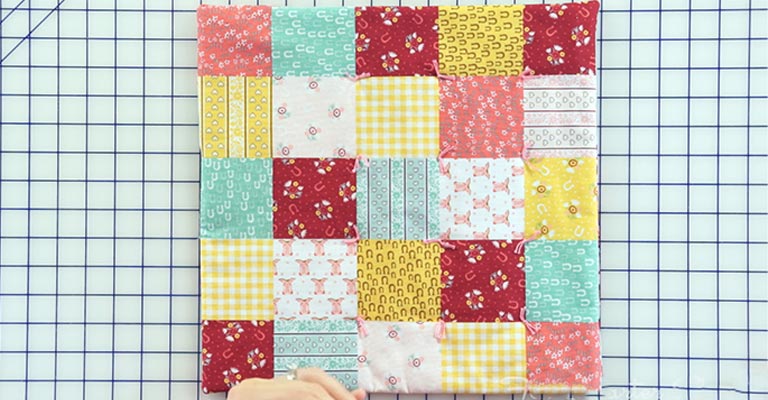
Quilting is an art that requires precision, creativity, and a keen eye for detail. As you invest your time, effort, and passion into creating a beautiful quilt, the last thing you want is for the sewing thread to bleed onto the fabric, potentially ruining your hard work.
Thread bleeding is a common concern among quilters, but with the right precautions, it can be prevented.
Here are essential steps to help you safeguard your quilts from thread bleeding:
Choose High-Quality Thread
The first line of defense against thread bleeding is to select high-quality sewing thread. Reputable brands are known for producing threads that are colorfast and resistant to fading. These threads are designed to hold their color even after repeated washes.
Select Colorfast Fabrics
When picking fabrics for your quilt, opt for those with good colorfast properties. Fabrics with tightly woven fibers and well-set dyes are less likely to allow dye transfer from the thread.
Pre-Wash Fabrics and Threads
Before you start your quilting project, it’s advisable to pre-wash both the fabric and the thread. Pre-washing removes excess dye and any residual chemicals that may be present in the materials. This step minimizes the risk of bleeding during subsequent washes.
Test for Colorfastness
Test your chosen thread for colorfastness before using it on your quilt. Sew a small piece of the thread onto a white fabric swatch and soak it in hot water.
If the water turns color or the white fabric gets stained, it’s an indication that the thread is not colorfast and should be avoided.
Adjust Quilting Techniques
Be mindful of your quilting process. Some quilting techniques can create friction between the thread and fabric, potentially causing bleeding. Consider using a smaller needle, a finer thread, or adjusting the tension on your sewing machine to reduce friction.
Proper Washing and Care
After completing your quilt, follow proper washing and care instructions. Use cold water and a gentle detergent to clean your quilt. This helps remove any excess dye from the fabric and thread without causing further bleeding. Avoid harsh washing practices.
Fixing Fabric Bleeds
In the unfortunate event of thread bleeding on your quilt, you can attempt to fix it. Soaking the quilt in a bathtub with hot water and a suitable detergent for several hours can help remove excess dye. Rinse thoroughly and dry the quilt flat or on low heat to prevent further bleeding.
How Can You Choose a Thread Less Likely to Bleed on Your Quilt?
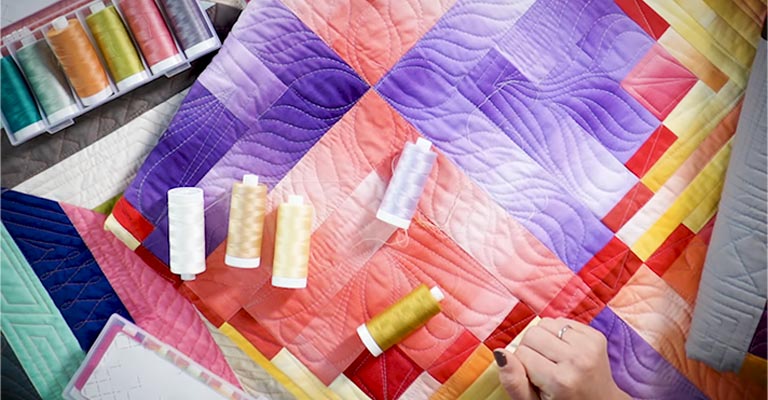
Selecting a thread that is less likely to bleed on your quilt is essential for preserving the quilt’s appearance and quality.
Here are steps to help you choose the right thread:
Opt for Reputable Brands
Choose threads from well-established and reputable brands known for their quality and colorfastness. Brands such as Aurifil, Gutermann, and Mettler are trusted by quilters for their colorfast threads.
Check for “Colorfast” Labels
Look for threads labeled as “colorfast.” Threads labeled as such are designed to retain their color and resist bleeding, even after washing.
Read Product Descriptions
When purchasing threads, read the product descriptions and labels carefully. Look for information on colorfastness and whether the thread is suitable for quilting.
Ask for Recommendations
Seek advice from experienced quilters or visit quilting forums and communities. Fellow quilters can provide recommendations based on their experiences with different thread brands.
Test the Thread
If you’re uncertain about a particular thread’s colorfastness, perform a simple test. Sew a small piece of the thread onto a white fabric swatch and soak it in hot water.
If the water turns color or the white fabric becomes stained, it’s an indication that the thread may not be colorfast and could bleed on your quilt.
Consider Thread Weight
The weight of the thread also matters. For quilting, finer threads with a higher weight (e.g., 50 wt or 60 wt) are often preferred as they create less friction during stitching and are less likely to bleed.
Match Thread to Fabric
Ensure that the thread color complements the fabric color. When the thread and fabric colors are well-matched, any minimal bleeding that may occur is less likely to be noticeable.
What Quilting Techniques Minimize Thread Bleeding?
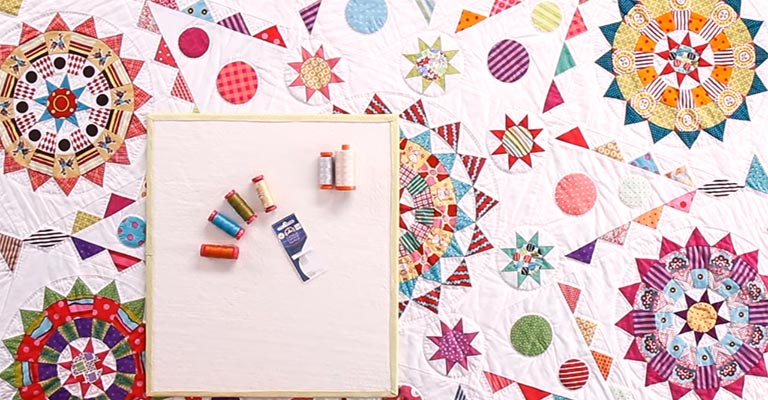
Quilting techniques play a significant role in minimizing thread bleeding. By adopting specific methods and approaches, you can reduce friction and the risk of thread bleeding on your quilt.
Here are quilting techniques that can help:
Use a Smaller Needle
Using a smaller needle size can reduce friction between the thread and fabric. A finer needle can create smaller holes, which are less likely to allow excess dye transfer.
Select a Finer Thread
Opt for a finer thread with a higher weight (e.g., 50 wt or 60 wt) for quilting. Finer threads generate less friction during stitching and are less prone to bleeding.
Lower Tension
Adjusting the tension on your sewing machine to a lower setting can reduce friction between the thread and fabric. Lower tension reduces the strain on the thread, making it less likely to release dye.
Use a Walking Foot
A walking foot attachment for your sewing machine can help feed the fabric more evenly and reduce friction between the layers of the quilt. This results in smoother quilting and less strain on the thread.
Stitch Slowly and Evenly
Quilting with a slow and steady pace, maintaining even stitches, can minimize friction. Uneven or fast stitching can create more stress on the thread, increasing the risk of bleeding.
Change Needles Regularly
Regularly changing your sewing machine needle is important. Dull or damaged needles can cause more friction and damage the thread.
Quilt with a Prewashed Quilt Sandwich
If possible, quilt with a prewashed quilt sandwich. This can help remove any excess dye or sizing from the fabric, reducing the risk of thread bleeding.
Practice on Scrap Fabric
Before starting the actual quilting on your project, practice on scrap fabric. This allows you to fine-tune your machine settings and quilting techniques to minimize friction and any potential thread issues.
FAQs
Can all types of thread bleed on a quilt?
No, not all types of thread will bleed on a quilt. High-quality, colorfast threads are less likely to bleed, while others may pose a risk.
Are there specific quilting techniques to reduce thread bleeding?
Yes, specific quilting techniques, such as using smaller needles, finer threads, and lower tension, can minimize friction and reduce the risk of thread bleeding on quilts.
What is the recommended way to wash and care for a quilt to prevent thread bleeding?
To prevent thread bleeding, wash quilts in cold water with a gentle, pH-neutral detergent. Avoid harsh washing practices and agitation that could encourage dye transfer.
How can I store my quilts to prevent thread bleeding over time?
Proper storage, such as avoiding direct sunlight and keeping quilts in a cool, dry place, can help maintain the quilt’s vibrancy over the years.
Can thread bleeding be influenced by the type of batting used in a quilt?
The type of batting can indirectly affect thread bleeding. Natural fibers like cotton can absorb excess dye more readily than synthetic ones, potentially leading to bleeding.
To Recap
In the world of quilting, where artistry meets craftsmanship, the concern of thread bleeding on a quilt is a common challenge. However, armed with knowledge and a few simple precautions, quilters can embark on their creative journey with confidence.
This exploration has unraveled the mysteries of sewing thread and its potential to affect the vibrancy of quilts.
By choosing high-quality, colorfast threads, pre-washing fabrics, testing for colorfastness, and adopting quilting techniques that minimize friction, quilters can ensure that their creations stand the test of time.
With proper care post-quilting, including gentle washing and diligent maintenance, the beauty of a quilt can be preserved for years to come.
So, quilt on, with the assurance that your threads will not only weave artistry but also stories of endurance and creativity.
Leave a Reply